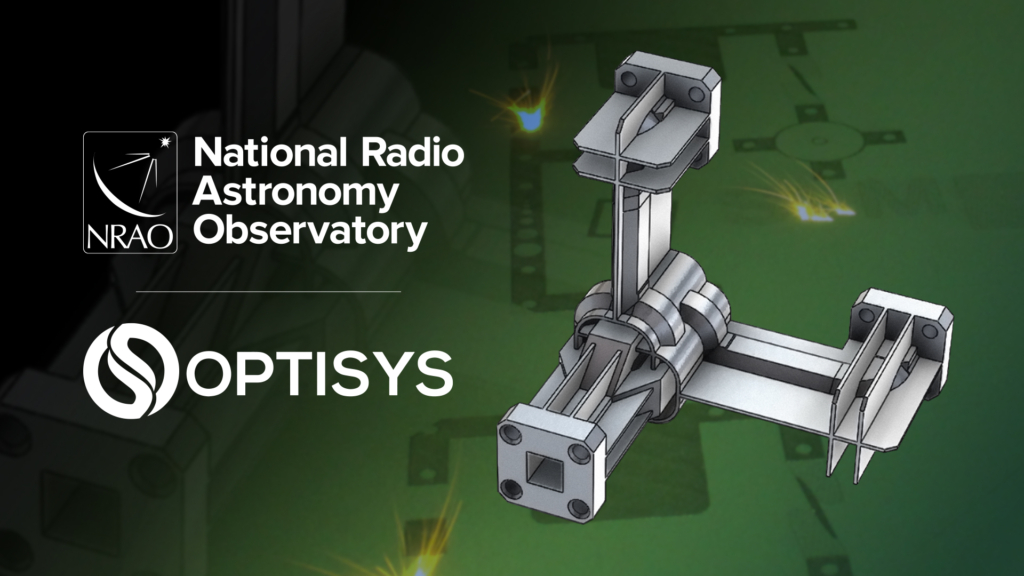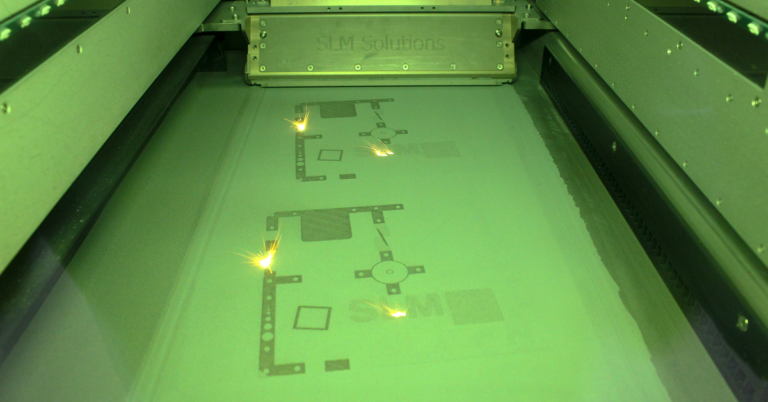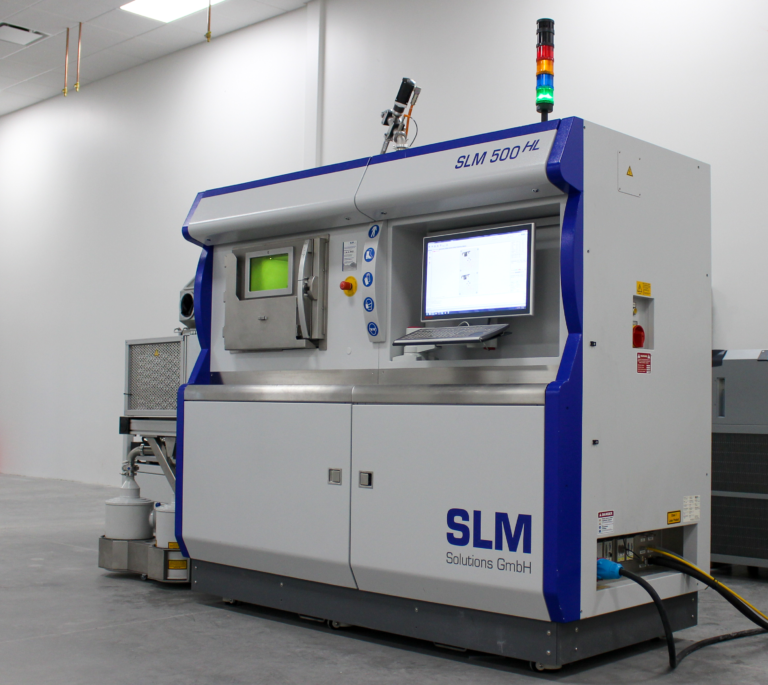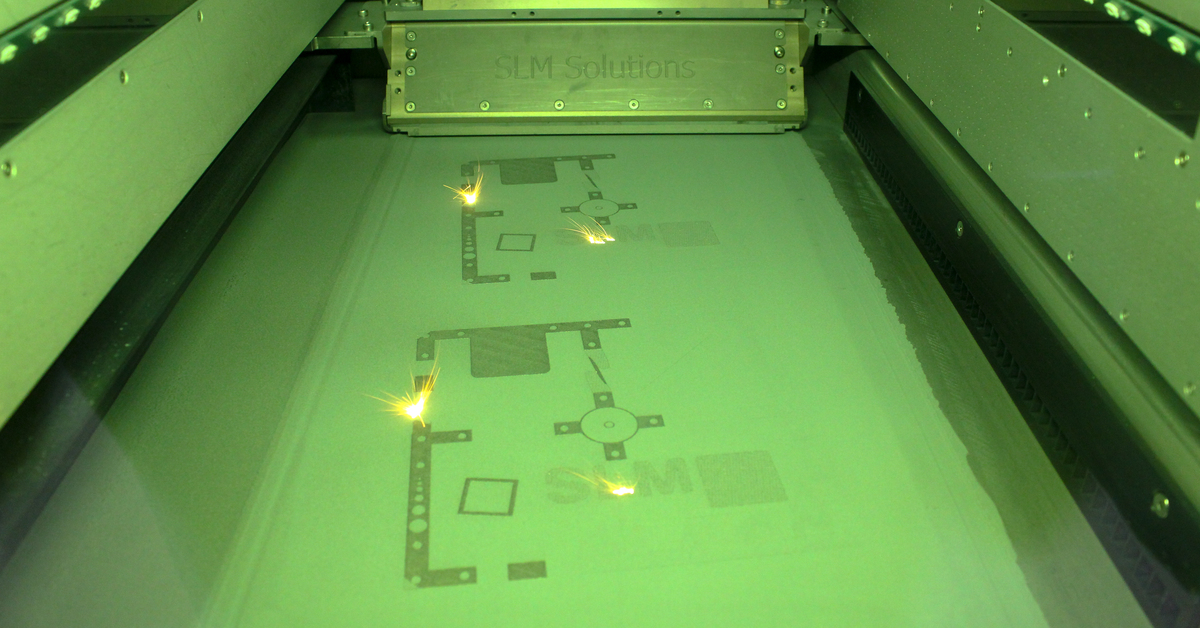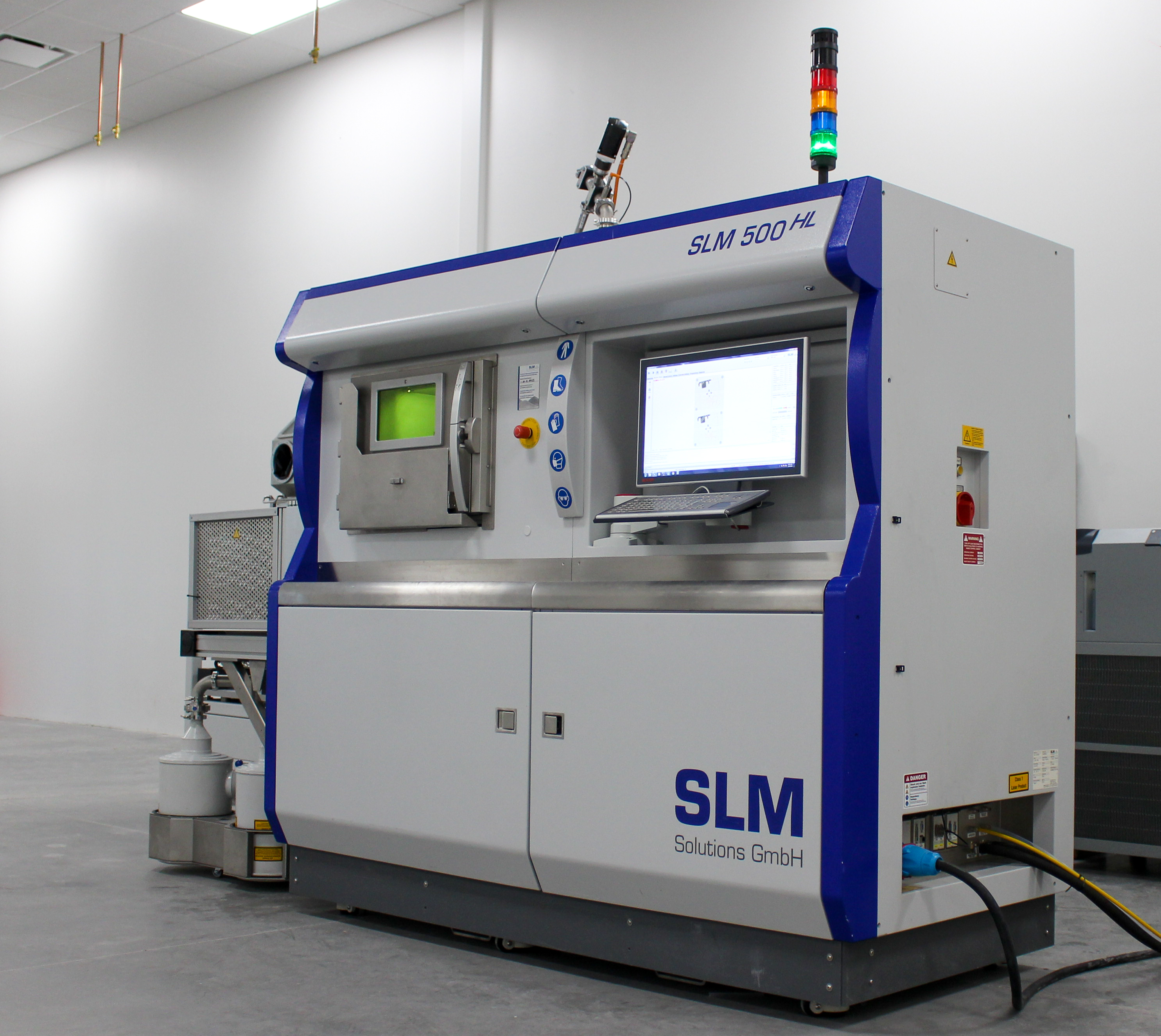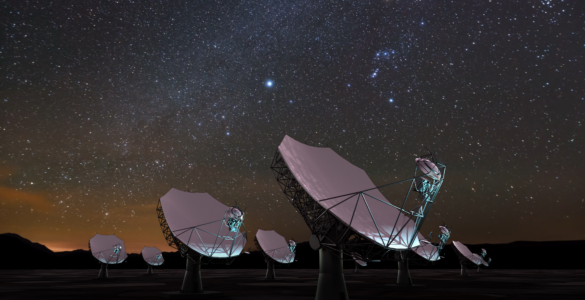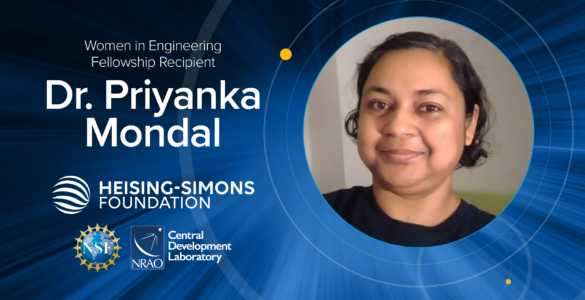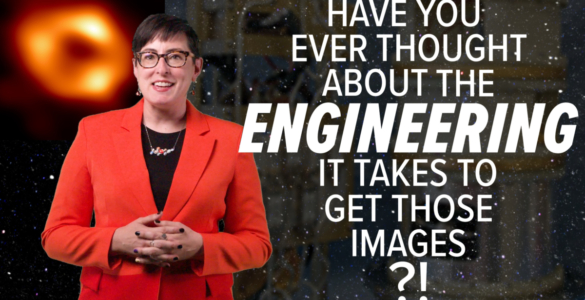Recent advancements in 3D printing (also known as additive manufacturing) for metallic structures make it possible to print all-metal electromagnetic devices—like antennas and waveguides—on demand. A new partnership between the National Radio Astronomy Observatory, headquartered in Charlottesville, Virginia, and Optisys, LLC, headquartered in West Valley City, Utah, will explore the potential for leveraging this technology for radio astronomyRadio AstronomyThe science that deals with the study of the universe by means of radio waves. applications.
In radio astronomy, the performance of antennas, waveguides, and other electromagnetic parts help determine the capability and sensitivity of radio telescopes and the quality of scientific data they deliver to researchers. The more capable and sensitive the antenna and other devices, the more scientists can learn about the Universe. NRAO’s Central Development Laboratory (CDL) is continuously testing new technologies in pursuit of building better telescopes.
“Science requirements are always pushing the limits of technology, so we need to invest in new technologies with the potential to break through current performance barriers,” said Bert Hawkins, Director of CDL. “3D-printed electromagnetic devices can have all sorts of shapes, structures, and designs that would be impossible to make with traditional machining techniques. NRAO’s new partnership with Optisys has the potential to lead to the development of devices with the ability to outperform those currently used in radio astronomy.”
The partnership between NRAO and Optisys is a natural fit for both organizations. NRAO’s CDL has a history of adapting and using new technologies to build the best performing radio astronomy receiversReceiverAn electronic device that amplifies, detects, and gives a measure of the intensity of radio signals. in the world. Optisys is a worldwide leader in the newest-generation radio frequencyFrequencyA measure of wave vibrations per unit time. Typically measured in hertz, or cycles per second. In radio astronomy, high frequency corresponds to shorter wavelengths, like submillimeter waves detected by ALMA. Lower frequency refer to longer waves, like centimeter waves detected by the VLA. product design using metal 3D manufacturing for a multitude of engineering disciplines.
“Optisys offers enhanced capability to NRAO for the next generation of radio astronomy missions by providing smaller, lighter, and more efficient waveguide and antenna solutions for smaller platforms,” said Janos Opra, CEO of Optisys. “This partnership is intended to further the art of what is possible in the field of radio astronomy and will push science to new heights as we explore the mysteries of our Universe.”
Optisys will soon commence production on the first test device, an orthomode transducer (OMT), with delivery expected by the end of 2022. OMTs separate the two polarizations found in many radio astronomy signals and help astronomers analyze collected data. The new 3D-printed OMT will be compared against those produced through traditional machining techniques and used as a baseline for designing and improving future devices.
“Every major advance in science starts with a first foundational step,” said Opra. “The testing performed by this partnership is that foundational step for creating the next generation of radio astronomy equipment by leveraging the disruptive potential of additive manufacturing.”
Hawkins added, “We believe that this joint effort with Optisys is a first step towards adding to the toolbox used by CDL’s future electromagnetic research and design engineers. That expanded toolbox may help us to develop entirely new classes of devices for use in the next generation of radio telescopes, including upgrades to the Atacama Large Millimeter/submillimeter Array (ALMA) and the next generation Very Large Array (ngVLA).”
Tony Beasley, Director of NRAO said, “Understanding the Universe requires us to push the limits of science, technology, and knowledge. CDL has been at the forefront of this effort in radio astronomy for decades, and with the help of Optisys, will continue to lead the industry in cutting-edge solutions.”
About NRAO
The National Radio Astronomy Observatory is a federally funded research and development center of the United States National Science Foundation operated under cooperative agreement by Associated Universities, Inc for the purpose of radio astronomy.
About Optisys
Optisys, LLC is a privately-owned revolutionary RF design and metal additive manufacturing company. Optisys’ unique approach allows us to create highly integrated antenna and radar products that achieve extremely low SWaP. Optisys’ has a wide product line ranging from feeds to phased arrays, for antenna and radar applications from sea to space.
Media Contacts:
Amy C. Oliver
Public Information & News Manager, NRAO
Public Information Officer, CDL
aoliver@nrao.edu






